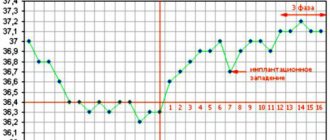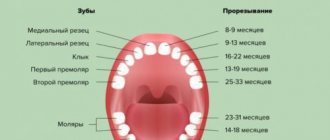Ovulation is the moment when a mature egg is released from a follicle that has ruptured under the influence of certain hormones. Once in the funnel of the fallopian tube, the egg can be fertilized by a sperm, the fertilized egg descends into the uterine cavity, becomes fixed there - the development of pregnancy begins.
Ovulation time
The standard time for ovulation to occur in a 28-day menstrual cycle is two weeks before the start of menstruation. Ovulation is a process that is regulated by pituitary hormones (luteinizing hormone and follicle-stimulating hormone) and controlled by the hypothalamus. The menstrual cycle is divided into phases:
Follicular phase - under the influence of follicle-stimulating hormone, follicles grow in the ovaries. At the beginning of the next phase, follicular growth stops, leaving one dominant follicle that continues its development. Follicles that have stopped growing and have not gained the required mass regress and then die. Sometimes two, rarely three dominant follicles develop, resulting in a pregnancy of twins or triplets. Most often, the development of multiple pregnancies is influenced by hormonal therapy and artificial insemination.
The ovulatory phase is the growth phase of the dominant follicle, the period of egg maturation. At this point its size is about 15 mm. During ovulation, the dominant follicle should be about 20 mm in diameter, sometimes the follicle reaches a larger diameter. In its place, a corpus luteum should form, which will be slightly smaller in size than the follicle.
Ovulation time – the middle of the menstrual cycle is the time of ovulation, the moment the egg is released from the follicle. The release of the egg from the follicle during ovulation lasts about an hour.
The luteal phase is the period of the corpus luteum, the phase from ovulation to menstruation. The corpus luteum, formed at the site of a ruptured follicle during ovulation, secretes hormones that prepare the uterus for pregnancy. If fertilization of the egg does not occur, the corpus luteum stops producing hormones and menstrual bleeding begins.
The period of the menstrual cycle is individual for each woman. It can range from 21 to 35 days, sometimes it is a shorter period, sometimes the cycle lasts more than 35 days. The time of ovulation occurs in the middle of the menstrual cycle, depending on the length of the cycle. The timing of ovulation is not the same; each month the time of ovulation can change depending on many factors.
The period favorable for conception is called fertile. According to researchers, an egg lives on average about 36 hours. Spermatozoa can live in the uterine cavity for about 5 days. Some sperm will die earlier; stronger ones will be able to wait for the egg, entering the uterus before it leaves the follicle. The fertile period is a week that begins 3-4 days before ovulation and ends two days after ovulation.
Other pregnancy planning methods
A woman can become pregnant even after one sexual intercourse, but it is better to prepare for pregnancy. In addition to the online calculator, there are other methods to determine the day suitable for conception.
Body temperature measurement
Immediately after sleep, the temperature is measured. Its indicators allow you to assess hormonal homeostasis. The onset of ovulation is characterized by an increase in temperature by 0.25-0.5 degrees. The method requires regular monitoring and recording of temperature readings.
Functional tests
These include:
- "Pupil" symptom. The degree of expansion of the external os of the cervical canal is assessed. Maximum dilation occurs before ovulation, when the concentration of estrogen is at its peak.
- Assessment of cervical mucus viscosity. The nature of mucus changes before ovulation. During the ovulatory period, the maximum concentration of estrogen leads to the viscosity of the mucus, which is visible when stretched (about 12 mm).
- Test. Depends on the phase of the cycle and shows the level of luteinizing hormone (LH). The maximum LH value occurs before ovulation (read more here).
- Karyopyknotic index (KPI). A smear microscopy is done, and the ratio of pyknotic (keratinizing) cells to intermediate cells is revealed. The ovulatory period of CPI fluctuation is 60-80%.
- Fern symptom.. Examine the cervical mucus on a glass slide under a microscope. Upon contact with air, a pattern in the form of a fern branch becomes visible. The clearest pattern is observed before ovulation, when the amount of estrogen is maximum. If there is no characteristic pattern, estrogen deficiency is possible.
- Ultrasound examination (ultrasound). Allows you to evaluate the functioning of the ovaries and the size of the endometrium.
You can also determine the day when conception is possible by the following signs:
- dull pain in the lower abdomen, sometimes one-sided;
- thinner mucus from the cervical canal;
- increased libido before ovulation – reproductive instinct;
- soft cervix, painful mammary glands;
- changeable taste, improved sense of smell;
- slight weight gain due to difficulty removing fluid.
If we talk about the reliability of the result, it is better to undergo an ultrasound. During the examination, the sonologist will see the mature follicle and determine the onset of ovulation.
Ovulation test
One of the methods that allows you to find out the time of ovulation is an ovulation test. The test is based on the level of luteinizing hormone. Testing is done on urine. With an increase in luteinizing hormone in the urine, the test shows two stripes, which indicates the close time of ovulation (one to two days). The disadvantage of the test is that in women with low levels of the hormone and an irregular menstrual cycle, the test may not determine the time of ovulation, but ovulation will occur. When purchasing a test, you should check the expiration date - an expired test may not show an increase in hormonal levels. Incorrect use of the test may also give an erroneous result.
Expert opinion of a doctor
Barakhoeva Zarema Bekhanovna
Reproductologist, obstetrician-gynecologist, Ph.D.
Whether pregnancy occurs or not depends on the motility and viability of sperm. If sexual intercourse occurs too often, the relative number of sperm in the semen decreases. Therefore, a couple who is “striving” to conceive should abstain before ovulation to increase their chances. Using the calendar also helps prevent unwanted pregnancy. But this method should not be used by women who have hormonal problems and irregular cycles.
Boy conception calendar 2021 by blood
Method one – we determine “young” blood:
Human blood has the ability to renew itself; in men and women this process occurs with different cyclicity. Men's blood is renewed less frequently - every four years, women's blood is renewed more often - every three years. It is enough to calculate whose blood was younger and more active at the time of conception. To do this, the age of the future father is divided by four, and the age of the future mother by three.
Example: a man is 29 years old, if 29 is divided by 4, the result is 7.25. Let's multiply 7 by 4, it turns out that my dad's blood was last renewed at the age of 28 - a year ago.
The mother’s age is 27 years old, if 27 is divided by 3, it turns out to be exactly 9, therefore, her blood is renewed in the year the child is conceived. In this situation, you need to focus on the month of birth. For example, a woman’s month of birth is May, in this case the process of blood renewal will begin in the first half of April and will be completed by the second half of June. It is best to plan to conceive a girl the next year after the woman’s blood is renewed.
You can make calculations by year. Add four to the year of your father’s birth, and three to the year of your mother’s birth. For example, the year of birth of the future dad is 1989, his blood will be renewed every four years - 1993, 1997, 2001, 2005, 2009, 2013, 2021, 2021. If the future mother was born in 1990, then her blood will be renewed in 1993, 1996, 1999 , 2002, 2005, 2008, 2011, 2014, 2021, 2021. The optimal period for conceiving a girl is next year after the expectant mother has renewed her blood.
Formula:
The calculation is quite simple: (Age of the child’s father at the time of conception + age of the mother) * 4 / 3 = ...
If the result is a number with a remainder of 2 or without a remainder, then it is a boy.
And if the remainder is 1, then it’s a girl. Divide in a column, and not using a calculator.
Calculation example:
(24+21) * 4 / 3 = 60 – this is my boy
(32+29) * 4 / 3 =81 and 1 remaining is a girl
Note: experts do not recommend planning to conceive a child in the year of the mother’s blood renewal, since the chances of giving birth to a girl in this case are significantly reduced. Method two – blood type and Rh:
Table: how to conceive a boy correctly
The Chinese have always been famous for their unconventional approaches to everything. And here they were also quite successful. In Eastern and Asian families, a man is treated with reverence; he is the heir and continuer of the family. Even when there were no restrictions on the number of children born in China, a table was invented that could be used to calculate the birth of a child of one gender or another. And when the Celestial Empire introduced a law on the possibility of having only one child in a family, the Chinese made this table a reference book.
Chinese table method for conceiving a baby
The Chinese table, or the method of conceiving a boy according to the calendar, is based on the principle connecting the mother’s age and the month of the expected birth of the baby. Rumor has it that this theory is more than seven hundred years old.
Each month of the year in which the mother is at a particular age is marked with the letter “d” (girl) or “m” (boy). It is enough to count 9 months back from the month with the desired letter in order to start working on conception at a certain time. According to the Chinese, this method gives almost one hundred percent results.
Japanese table method for conceiving a boy
The Japanese approached this issue more creatively and, at the same time, thoroughly. They created two tables at once to choose from. In addition to the month of birth of the mother (vertical), the month of birth of the father (horizontal) is also added there. In each column at the intersection of ages, a certain number is indicated, from 1 to 12. According to the Japanese, this table very accurately determines on what days you can conceive a boy.
This figure is called family, and it is necessary for further use in the second table. Here the probability of having boys and girls is indicated by crosses: the more crosses in the column, the higher the chance of conceiving a child of one gender or another.
It is enough in the column with the family digit number to select the month that corresponds to the column with the largest number of “boy” crosses - the result of having a son will be guaranteed.
Table of the Budyansky couple
According to the couple's patented theory, a woman's egg itself attracts a particular type of sperm that suits it at a certain period. To plan the sex of a child, you need to know the date of conception of the unborn child and the date of conception of his mother.
If the maternal date is unknown, it is calculated approximately commensurate with the birthday. Using the table below, we calculate whether the mother is even or odd. It must be remembered that an odd-numbered woman can give birth to a daughter only in an odd-numbered month, and a son in an even-numbered month. And vice versa.
How to conceive a boy: Chinese calendar and Japanese table
There are Asian tables that can be used to calculate the month in which you can become pregnant with a boy. Chinese and Japanese. Now they are very fashionable and many people have heard about them.
- Chinese table. It is based on the Chinese lunar calendar. And it only takes into account the woman’s age.
- Japanese. It consists of two tables. And the data of both is already taken into account. In the first, the number is calculated according to the birth months of the future parents.
And in the second, this number will already show the chances of getting pregnant boys in specific months.
These tables do not have any scientific evidence; these are just observations. They do not always show the same result, so which one to believe is not entirely clear. It makes sense to try to calculate for several familiar couples and compile personal statistics on which table turned out to be more correct.










